We caught up with Stellantis B2B director Nick Richards for an update on the company’s fleet strategy and to discuss some of its latest models.
Stellantis is a constantly evolving beast. It’s the fourth largest car maker in the world and is a major player in the UK market, offering vehicles from Abarth, Alfa Romeo, Citroen, DS, Fiat, Jeep, Maserati, Peugeot and Vauxhall.
Richards oversees the group’s fleet strategy. He was appointed to replace James Taylor, last year.
The company’s fleet strategy was re-written, by Taylor, in order to promote greater synergies between the various brands and to improve customer relationships.

Richards says: “Fundamentally, the strategy that James incepted is still the one that we're continuing. We have a cross-brand approach to most of the areas of our of our fleet business. That’s leasing, rental, major fleets and special vehicle operations
“We believe that gives us more synergy and efficiency, but critically, gives us a better customer relationship. Instead of directing customers to different people, depending on the brand, fleet customers now deal with one team. That makes it easier for us to offer all of the products in our range to them and we do in a much joined up way.”
We caught up with Stellantis B2B director Nick Richards for an update on the company’s fleet strategy and to discuss some of its latest models.
Stellantis is a constantly evolving beast. It’s the fourth largest car maker in the world and is a major player in the UK market, offering vehicles from Abarth, Alfa Romeo, Citroen, DS, Fiat, Jeep, Maserati, Peugeot and Vauxhall.
Richards oversees the group’s fleet strategy. He was appointed to replace James Taylor, last year.
The company’s fleet strategy was re-written, by Taylor, in order to promote greater synergies between the various brands and to improve customer relationships.

Richards says: “Fundamentally, the strategy that James incepted is still the one that we're continuing. We have a cross-brand approach to most of the areas of our of our fleet business. That’s leasing, rental, major fleets and special vehicle operations
“We believe that gives us more synergy and efficiency, but critically, gives us a better customer relationship. Instead of directing customers to different people, depending on the brand, fleet customers now deal with one team. That makes it easier for us to offer all of the products in our range to them and we do in a much joined up way.”
Smaller fleets and SMEs will still interact with the group at brand level, although a greater focus on inter-brand fluidity is being enabled via the new structure.
Two fleet directors manage the existing Stellantis brand groups. Fiat Jeep and Vauxhall are managed by Laurence Hagger. Iain Montgomery looks after the Peugeot, Citroen and DS brands.
The strategy, sales and marketing of the Stellantis LCV portfolio are managed by Tony Lewis, LCV director for the UK.
Richards explains: “Customers have a senior point of contact that they can talk to, so if they have a brand specific query, they can escalate it to somebody senior within the company. It gives the customer a really good point of contact and it makes sure that we are balanced in the way that we're doing business across all of the channels that were that were that we're operating in.”
True fleet growth is a top priority
The bulk of Stellantis car registrations – 194,000 in 2022 – come from its core volume brands Citroen, Peugeot and Vauxhall. The latter shifted the most vehicles, last year, with 83,691 cars sold.
Across all the Stellantis brands, only 27% of cars registered in 2022 were sold into the true fleet channel. The majority went to retail customers.
In the first half of 2023, Stellantis has sold slightly more cars into Motability, than true fleet. For pure electric vehicles, more than half (52%) sold between January and July went to Motability.
Richards said: “Motability is good business for us. All the vehicles are obviously maintained, so they're good news when they go into the used vehicle market at the end of the three year lease. I don't think we would see ourselves doing something that would reduce our presence in the Motability market”
Richards is keen to increase the number of cars sold into the true fleet channel and he believes the new range of vehicles coming will drive more registrations.
These include the recently launched Peugeot e308, along with the Astra Electric. Both cars share a platfrom and powertrain. There’s also the Alfa Romeo Tonale plug-in hybrid, which provides the group with a competitor in the premium segment.

Changes to the battery used in the Citroen C5 Aircross, Peugeot 3008 and Vauxhall Grandland plug-in hybrids have also resulted in the cars moving down into the 8% benefit-in-kind tax bracket, making them more appealing to company car drivers.
Jeep sells the highest proportion of vehicles into true fleet, out of the group, driven by demand for the Compass plug-in hybrid. The new Avenger, Jeep’s first EV, with further bolster its appeal among fleets.
Fiat is expected to grow its fleet share too, with the upcoming 600E entering the B-SUV segment this year.
Richards says: “Overall, we're pleased with our performance in the EV market market. There are certainly customers feeding back some challenges that they have, particularly around the charging infrastructure and particularly around where they have people that take the vehicle home with them at night, that don't have easy access to charging infrastructure.
“If the government is going to go down the route that he's going down, we have to make sure the infrastructure is there to support that.”
Electric expansion
Stellantis plans to have more than 75 battery electric vehicle (BEVs) models available, globally, by the end of the decade.
Its Dare Forward 2030 strategic plan is targeting 100% of sales in Europe and 50% of sales in the United States to be BEVs by the end of the decade, equating to annual sales of five million by 2030.
Four platforms form the backbone of the EVs from all Stellantis brands. The platforms are said to provide a high level of flexibility, both in length and width, and component sharing.
Alongside the small, medium and large car platforms will be one dedicated for commercial vehicles, such as vans and pick-ups. The platforms can be paired with a family of three electric motors, offering varied configurations including front- rear- and all-wheel drive, plus plug-in hybrid.
Battery packs will range from 37kWh up to 200kWh and offer between 300-500 miles of driving range, with the charging ability to add 20 miles per minute.
Significant investment will also be made into connectivity, with in-car digital services set to generate more than £17 million in additional revenue for the group by 2030.
Commercial vehicle leader
Stellantis offers commercial vehicles across the Citroen, Fiat Professional, Peugeot and Vauxhall brands, with its three core offerings shared across all nameplates.
It has restarted production at its Ellesmere Port factory after reinventing the location as a dedicated electric-only facility.
A £100 million investment has transformed the plant for EV production and it will specialise initially in electric vans, including the Vauxhall Combo Electric, Peugeot e-Partner, Citroen e-Berlingo and the Fiat E-Doblo.
The group is the UK’s largest commercial vehicle manufacturer and the Vauxhall Vivaro-e is the UK’s best-selling electric van.
It was named Best Medium-Size Electric Van at the 2023 Fleet News Awards.
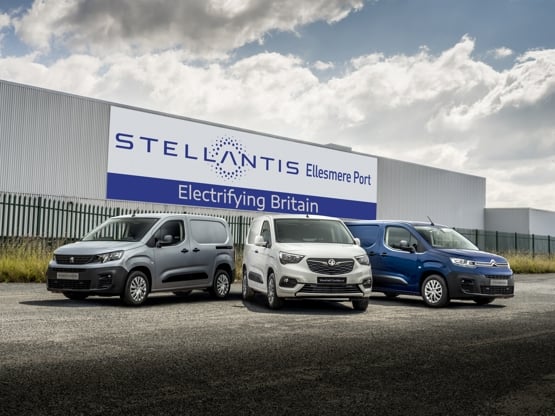
“We're blessed that we have some very large corporate customers that we supply with Vivaro-e, Richards says. “Which is great. It's great that they've shown faith in product and it's great seeing the vehicles on the road.”
All Stellantis vans are available as fully-electric models, and the next step is the introduction of hydrogen powertrains. The medium-sized van is the first to be offered, with UK examples potentially arriving next year.
Richards says: “We are we are talking to some major customers about hydrogen. They want to evaluate the opportunity to be utilising those vehicles on their fleets, which is great. And I guess it's measuring the market demand. Really, the key for the group is establish what the demand is in the UK market, what the demand will be."
Login to continue reading.
This article is premium content. To view, please register for free or sign in to read it.







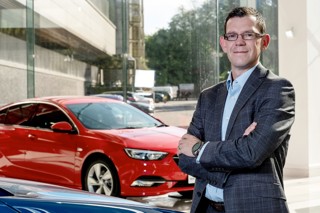
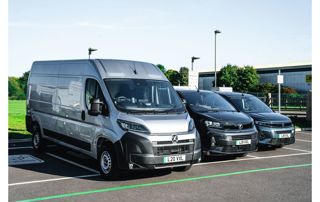

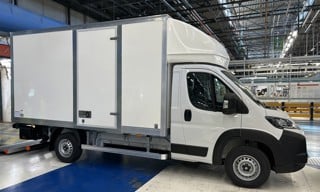
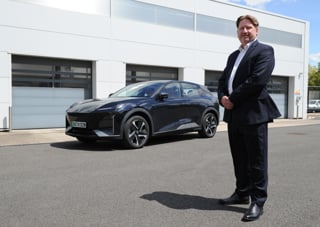





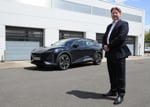

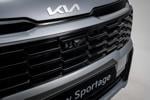




Login to comment
Comments
No comments have been made yet.